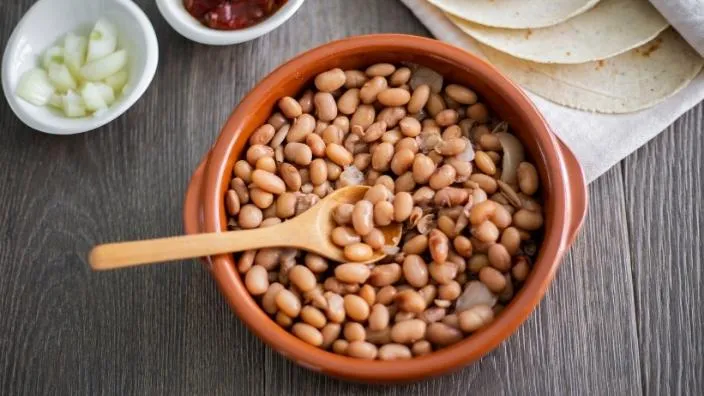You may have heard about and have tried some delicious food but this is one amazing. Natto can be found in different stores but is not always fresh. However, you can give it a try and make your own fresh Natto at home. The question which would come to your mind how to make Natto.
It is easy to have a fresh Natto in your home fridge and enjoy eating at your breakfasts. If you’re the own did not hear about Natto or the one seeking out the ways to make Natto, here is a detailed guide for you. This article addresses the whole procedure along with the ingredients and needed materials. Let’s move forward and start making Natto.
Table of Contents
- What is Natto?
- What is needed to Make Natto at Home
- Health Benefits of Homemade Natto
- Daily Storage of Natto
- Daily Usage of Natto
- How to Make Natto: Step by Step
- 1. Select the Soya Beans for Natto
- 2. Sterilize well all Containers and Utensils
- 3. Rinse the Beans Well
- 4. Soak the Beans for More than 12 Hours
- 5. Boil Beans in Saucepan for 3-4 Hours
- 6. In Case of a Pressure Cooker, Boil Beans for 30 Minutes
- 7. The Cooking Water is of no Use
- 8. Put the Dry Beans in a Bowl
- 9. Add Natto Culture to Boiled Water
- 10. Add Mixture to the Cooked & Warm Beans
- 11. Incubate or Sanitize Well the Bowl & Spoon
- 12. Cover the Lower Layer of the Bowl with Beans and Seal it with Cheesecloth
- 13. Keep sealed bowl of Beans at 38 degrees C or 100 degrees F for More Than 24 hours
- 14. Freeze the bowl for More Than12 hours
- Your Natto is Now ready
- What You Should Not Do
- a). Do not use the Natto Culture in Excess
- b). Don't Give Less Time to Soaking & Cooking
- c). Don't Neglect Giving High Temperatures
- d). Don't Use any Other Fermentation Powder than Natto Starter Spores
- e). Don't Eat Natto Without Freezing First Time
- f). Don't Store Natto in Room Temperature
- g). Don't Use Natto for More Than Two Weeks
- Conclusion
- FREQUENTLY ASKED QUESTIONS
What is Natto?
Before going to explain it is good to know exactly the dish. Well, it is the superfood and the most consumed dish in Japan. Often used in breakfast, it is a vitamin and protein-rich food that can be found not only in Japan but everywhere throughout the world. It is sticky in nature and tastes a bit sour on account of fermentation but addicted consumers eat it easily.
Suggested Reading: How to reheat burrito
What is needed to Make Natto at Home
Making Natto at home is very easy, each and every one can do so. If you are planning to do so, you just need following materials: -

Health Benefits of Homemade Natto
The nutritious dish is full of benefits; it includes proteins, vitamins and easily digestible things. It contains Vitamin K2 which is helpful for bones and the heart. It has fermented soya beans which can easily be digested. It also has probiotic bacteria that are helpful for our microbiota, which improves our immunity and blood cholesterol levels.

Daily Storage of Natto
It should only be kept in fridge, keeping in fridge may add extra taste. Keeping it warm may initiate the fermentation again and it would not be able to eat easily. So do not keep it out of the fridge. There should be also a separate portion in your fridge for it. Additionally, don not use it for more than 3 weeks. Now you know the process, make fresh and enjoy fresh.
Daily Usage of Natto
Japanese mostly prefer it eating in their breakfasts, they widely use it in the morning time. They also eat it with rice and other dishes like karashi mustard and olive oil. It can also be eaten with sauce which is particularly made for it. You can make a vegetable chart or samosa chart and add your Natto to it. In salad, it is widely used with tomatoes, cucumber and many more. The classic way of using the Japanese is to add it to pasta. They combine olive oil, soya sauce, spaghetti and pasta water.
How to Make Natto: Step by Step
There is no lengthy list of the ingredients, you only need two kinds. You need Soya Beans and Nattomoto or Natto Culture to make Natto in Home. Just grab these ingredients and start the procedure of making Natto.
In order to avoid wasting extra expenses calculate your estimate and then purchase the ingredients. Mostly making Natto for 3 weeks of it needs only 300 grams of soya been and one and a half teaspoon of Natto starter pores or Natto culture.
1. Select the Soya Beans for Natto
There are several types of Soya Beans may be found in the market but do not let yourself confused. First, make sure that how much is needed. Some people suggest more than 400 grams but we suggest you a meal for two weeks to avoid food poisoning. So go with the moderate amount, 240-280 grams will be enough for two weeks. Recalling the first question, ask the shopkeeper to give you a type of soybeans particularly used for Natto. That will be easy in boiling, and soaking and will give you a better taste.
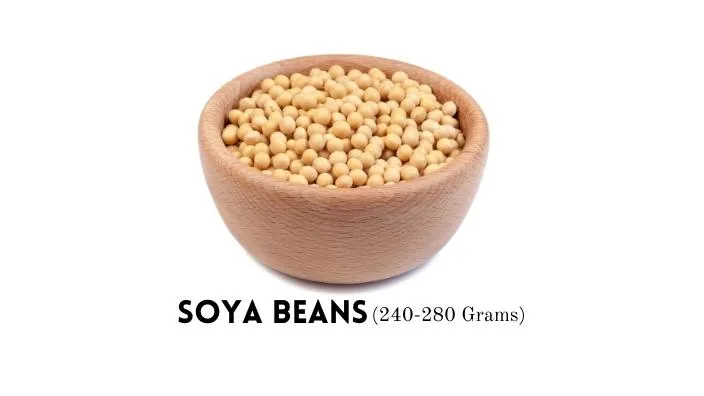
2. Sterilize well all Containers and Utensils
As mentioned in the list of needed materials, stainless steel containers and stainless steel spoons are required for making Natto because the process of fermentation is involved in it. So not only stainless steel utensils but also sterilizing them with boiled water is also vital to avoid bacteria and fungi involvement. So take into consideration that the utensils must be of stainless steel and sterilized.
3. Rinse the Beans Well
After incubating all the utensils then next step is to rinse well the beans. Rinsing once won’t give you the best results so it is recommended to repeat the process the process till the water becomes clean. By doing so you will remove the dust, chemicals and other things that exist, industries do not care about these things. They just pack the products in shiny packings without taking into consideration the side effects of chemicals.
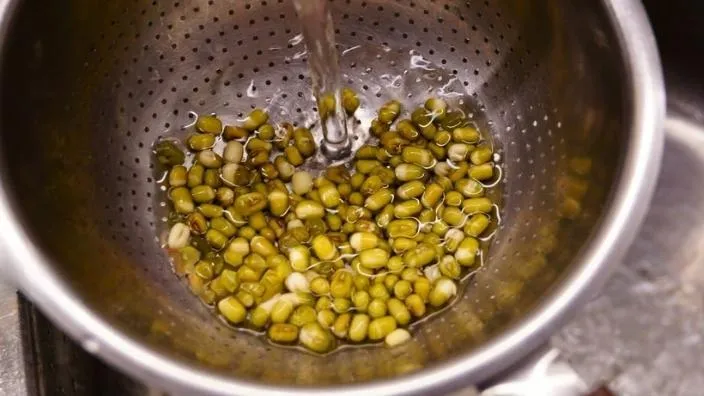
4. Soak the Beans for More than 12 Hours
The most vital phase in making Natto is the soaking of beans in water for more than 12 hours. If you soak the beans well they will be easy in cooking and won’t be rigid. Get the limited amount of beans in a container and pour water four times more of the beans. The water neither should be too warm nor too cold just freshwater of moderate temperature. The most preferred way is soaking beans overnight, soak before going to bed and the beans will be ready for cooking the next morning.
5. Boil Beans in Saucepan for 3-4 Hours
After soaking beans in water for more than 12 hours it would be come soft and ready for cooking. Take care of incubating the utensils to avoid the involvement of fungi and bacteria. Now put the soaked beans in a stainless steel sterilized Saucepan and pour water double the volume of beans.
Boil the Beans for 3 to 4 hours, take care of the provided heat. If the heat provided for boiling is more than the required lower it. The best way is to give a proper amount of heat for 2 hours and then lower the heat for 1 hour of boiling.
6. In Case of a Pressure Cooker, Boil Beans for 30 Minutes
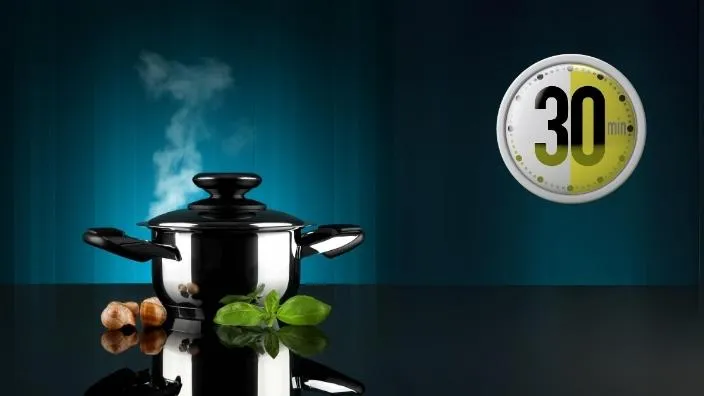
If you are eager and cannot wait for that much time then use your pressure cooker for boiling. As a pressure cooker takes less time for boiling the recommended time is 30 to 35 minutes. Notice that do not release the air instantly, instead wait for the air to effuse itself. The pressure cooker is not a bad choice but if you have time then do boiling in a saucepan.
7. The Cooking Water is of no Use
After boiling the beans in water make sure and check if the beans are soft or not. If there is still a need for boiling give more heat. The boiled may be harmful to use for any purpose and there will be no need for it any more. If you are planning to cook anything else in that boiled water and feel lethargic, do not ever try to put any other food in that used water. After boiling the cooking water is of no use and you can throw it away.
8. Put the Dry Beans in a Bowl
If you are done with boiling and discarding the water now separate the beans and put them in another container but cover it with something to keep it warm. Do not expose the boiled and cooked beans to air, it will lose heat and the fermentation won’t work effectively. Now the beans are ready for fermentation.
9. Add Natto Culture to Boiled Water
Natto culture or Nattomoto powder, also called Natto starter spores contains bacteria B. subtilis. Make a mixture of Natto culture and water for fermentation. Take 1 teaspoon of Natto Culture and 2 teaspoons of boiled water in a bowl. Stir it for 3 to 5 minutes to get the best mixture.
10. Add Mixture to the Cooked & Warm Beans
The mixture of Natto Culture Boiled Water must be added to warm beans, if the beans are not warm the fermentation will not be initiated effectively. The Natto starter spores contain B. subtilis, bacteria that work best with heat. Now stir the beans for 5 to 10 minutes to mix well the beans with the mixture added.
11. Incubate or Sanitize Well the Bowl & Spoon
Now once again sterilize the bowl and spoon before putting something into them. For safe putting use a sterilized spoon and transfer the beans now to an incubated bowl. The beans are ready for fermentation, just move three or four steps ahead and get your delicious Natto.
12. Cover the Lower Layer of the Bowl with Beans and Seal it with Cheesecloth
This step should be done with much care. You should not overfill the bowls to the end, put the amount of beans that just cover the lower layer or base of the bowl. It means that you will need 2 or 3 sterilized bowls to ensure effective fermentation, you cannot use one overfilled. The next much-needed thing is cheesecloth, use it below the lid as an extra seal that will also help in fermentation.
13. Keep sealed bowl of Beans at 38 degrees C or 100 degrees F for More Than 24 hours
As mentioned in the previous section, the bacteria work best in high temperatures. For such purpose the beans need to be kept at a temperature more than 35 degrees, the temperature ranges from 35 to 40 Degrees Celsius. What you need is to keep the bowls or containers in an oven for more than 24 hours.
If you want to save the electricity cost or cannot use it for such an interval due to some other reasons. The best manual affordable way is the use of a blanket, just wrap the containers in a blanket and keep it warm for 30 hours or more.
14. Freeze the bowl for More Than12 hours
The Natto is now ready, all set for eating, open the seal of the Cheesecloth with the lid. The fermented beans may still have a little bit sour smell and you may not enjoy them like the addicted ones. Don’t worry, wait for 12 hours and then try it. Actually, fermented products have the same issue and to avoid this keep the Natto freeze in a fridge for 12 hours. The freezing will also give the Natto a sticky property.
Your Natto is Now ready

While following the steps now your Natto is ready. Use this protein and vitamin-rich food in your breakfast daily. Now you have the fresh one in your hands, use it with rice, mustard, olive oil and much other food. There is another precaution, do not use your Natto for more than 3 weeks. It may not harm you but most probably its taste and smell may change over time after all it is fermented.
What You Should Not Do
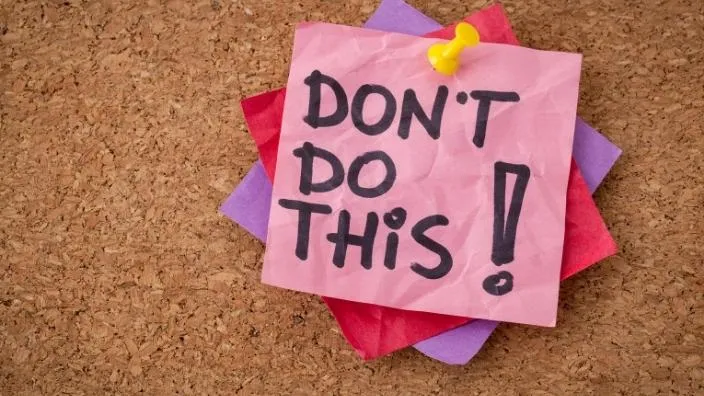
a). Do not use the Natto Culture in Excess
Do not use the Natto culture in excess amounts, use only in moderate amounts. The reason for forbidding the excess amount is the fermentation rate will be high which ultimately will increase the smell and sour taste. You would not be able to eat the kind of Natto with that smell and taste. The ideal amount of Natto culture for making Natto is only 1 teaspoon if the soya beans are 250-300 grams. For that amount of Natto culture, you need only 2 teaspoons of boiled water.
b). Don't Give Less Time to Soaking & Cooking
The moderate time for soaking is more than 12 hours if you do not give that much time ultimately the beans will not be soaked and you will have no soft beans. So giving time more than recommended is needed. The next mistake people often do not give much time to cook and boil the beans. The moderate time for cooking is more than 24 hours and if you do not cook your beans, the same issue will you face, you have no soft and no properly cooked beans. So always take care of this thing, soak and boil well the beans.
c). Don't Neglect Giving High Temperatures
The temperature needed for fermentation is 38 degrees C or 100 Degrees F, so it is mandatory to provide that much temperature. Neglecting that much temperature will lead to no proper fermentation and may destroy the taste and smell of your Natto. Without proper fermentation, you would not have the desired result and the Natto made may harm your health. To provide 38 degrees C temperature at any cost, if you are unable to keep your oven on then wrap your containers contacting Natto in blankets.
d). Don't Use any Other Fermentation Powder than Natto Starter Spores
For saving money people and ease people often avoid using Natto starter spores and instead of that they use any type of fermentation powder available at home. We would say this is a blunder other than its own particular spores no fermentation powder can give a product of Natto. It is almost impossible to have Natto. So do not ever make this mistake and do not prefer using other local stuff. You can easily get the Natto culture in almost every supermarket.
e). Don't Eat Natto Without Freezing First Time
Sometimes people often also neglect freezing the Natto for the first time and eat it just after fermentation. Although it is not harmful to health you would not get that desired taste, smell and sticky feel. For the first time freezing the Natto overnight is the only way to get the sticky feel, best smell and delicious taste. The time for freezing Natto the very first time is more than 12 hours.
f). Don't Store Natto in Room Temperature
After freezing for the first time some people often make the mistake of storing it at room temperature as well. Don’t ever think of keeping the fermented products out of the fridge. Always keep them freeze and fresh, same is the case with bread, yoghurt and other foods. After using the Natto keep it in fridge for all the time, whenever you need it, eat and then preserve it in fridge.
g). Don't Use Natto for More Than Two Weeks
Nutritionist always advise of not eating the Natto for more than two weeks, using it for than two weeks may harm you. You can extend the period to three weeks but not more than that. Using fermented foods for more than two or three weeks may lead to food poisoning. So it would be better to make a new one at home.
Conclusion
Natto is a superfood and the most consumed dish in Japan. Often used in breakfast, it is a vitamin and protein-rich food that can be found not only in Japan but everywhere throughout the world. Natto can be found in different stores but is not always fresh.
However, you can give it a try and make your own fresh Natto at home. Take a proper amount of soya beans, rinse and soak it for 12 hours, boil for 3 hours and add Natto culture for fermentation. Keep it warm for 24 hours and then freeze it. Enjoy your fresh protein-rich Natto.
These days, Natto has become a happy meal for the kids in different age slots’ at the same time, excessive intake of the Natto may cause stomach problems in the kids reducing their immunity power to control and hold the effects of certain diseases.
FREQUENTLY ASKED QUESTIONS
How to Make Natto at home?
You can make Natto at home very easily by following some steps. Take a proper amount of soya beans, rinse and soak it for 12 hours, boil for 3 hours and add Natto culture for fermentation. Keep it warm for 24 hours and then freeze it. Natto can be found in different stores but not always fresh. However, you can give it a try and make your own fresh Natto at home.
Why the sterilized utensils always used while making Natto?
Stainless steel containers and stainless steel spoons are required for making Natto because the process of fermentation is involved in it. So not only stainless steel utensils but also sterilizing them with boiled water is also vital to avoid bacteria and fungi involvement. So take into consideration that the utensils must be of stainless steel and sterilized then you can get the desired results.
How you can Store Natto?
It can only be kept in the fridge, keeping in the fridge may add extra taste. Keeping it warm may initiate the fermentation again and it would not be able to eat easily. So do not keep it out of the fridge. There should be also a separate portion in your fridge for it. Additionally, do not use it for more than 3 weeks. Now you know the process, make fresh and enjoy fresh.
How much and what kind of soya should be used?
First make sure that how much is needed. Some people suggest more than 400 grams but we suggest you a meal for two weeks to avoid food poisoning. So go with the moderate amount, 240-280 grams will be enough for two weeks. For the type ask the shopkeeper to give you a type of Soya Beans particularly used for Natto. That will be easy in boiling, and soaking and will give you a better taste.
What are the health benefits of Natto?
The Natto is full of health benefits; it includes proteins, vitamins and easily digestible things. It contains Vitamin K2 which is helpful for bones and heart. It has fermented soya beans which can easily be digested. It also has probiotic bacteria that are helpful for our microbiota, which improves our immunity and blood cholesterol levels.

